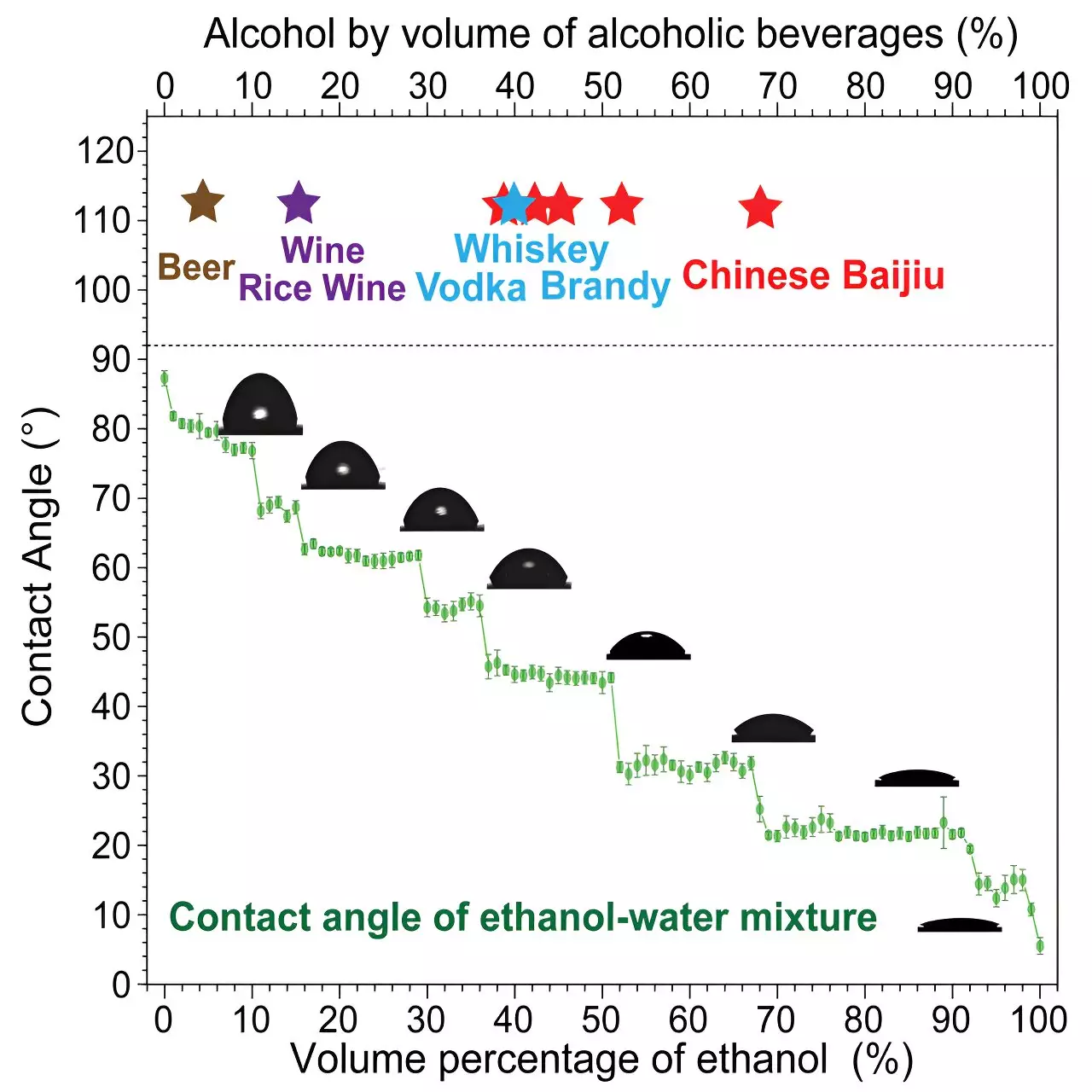When it comes to enjoying different alcoholic beverages, the temperature at which they are consumed plays a significant role in how they are perceived. Whether it’s beer, white wine, red wine, baijiu, or sake, each beverage has its own ideal drinking temperature. A recent study published in the journal Matter sheds light on how the taste of alcoholic beverages can be influenced by temperature, specifically in relation to the presence of ethanol-like flavors.
The study, led by materials scientist Lei Jiang from the Chinese Academy of Sciences, stemmed from a curiosity about the distinct alcohol concentrations found in Chinese baijiu. By experimenting with the contact angles of solutions containing varying amounts of alcohol, Jiang and his team discovered that the formation of molecular clusters played a crucial role in how alcohol taste is perceived. At low concentrations, ethanol molecules formed pyramid-shaped structures, while higher concentrations led to chain-like arrangements.
One of the key findings of the study was the impact of temperature on the formation of molecular clusters and, consequently, alcohol taste. The researchers observed that certain cluster structures associated with specific alcohol concentrations were more pronounced at room temperature but disappeared at higher temperatures. For example, baijiu at 38-42% and 52-53% ethanol concentrations exhibited distinct cluster structures at room temperature, but these differences were less noticeable at elevated temperatures.
The insights gained from this study have important implications for the alcoholic beverage industry, particularly in achieving desired flavor profiles with the lowest ethanol concentration possible. By understanding how temperature influences the formation of molecular clusters and, by extension, alcohol taste, beverage producers can optimize their processes to create products with specific flavor characteristics. This knowledge could also help in developing innovative strategies for enhancing or modifying the taste of alcoholic beverages based on consumer preferences.
The study on the relationship between temperature and alcohol taste provides valuable insights into the molecular mechanisms that underpin flavor perception in alcoholic beverages. By investigating the role of molecular clusters and contact angles in shaping alcohol taste, researchers have uncovered a novel approach to understanding how temperature affects flavor profiles. This information not only expands our knowledge of the science behind alcohol taste but also offers practical applications for the beverage industry in creating products that cater to consumer preferences. As further research is conducted in this field, the potential for new discoveries and innovations in the realm of alcohol taste modulation remains promising.


Leave a Reply